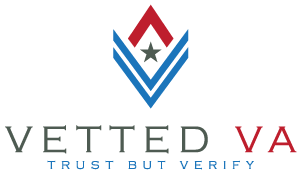The VA loan remains one of the most powerful benefits available to veterans, active-duty service members, and eligible spouses. For first-time homebuyers (FTHBs), it can make the dream of homeownership achievable with no down payment and no mortgage insurance — a combination that’s hard to beat.
In 2021, one in two VA borrowers was a first-time homebuyer, showing just how essential the VA loan program is for helping veterans purchase their first homes.
Why VA Loans Matter for First-Time Homebuyers
The VA loan provides:
-
Zero down payment for eligible borrowers.
-
No private mortgage insurance (PMI) requirement.
-
Competitive interest rates backed by the federal guaranty.
For first-time buyers with limited savings but strong credit and steady income, the VA loan can open doors that might otherwise stay closed.
2021 Snapshot: Record VA Loan Volumes and Rates
According to Polygon Research’s GovLoansVision data, 2021 was an exceptional year for VA lending:
-
Average VA first-time homebuyer rate: 2.90%.
-
Quarter 3 2021 set a record with over $19 billion in VA FTHB loan volume.
-
Since 2017, VA purchase loans have helped roughly 200,000–230,000 first-time veteran homebuyers each year.
This translates to an average of $56 billion in purchase originations annually, peaking at an estimated $69 billion in 2021 — an impressive figure that reflects both affordability and access.
“The VA loan continues to be one of the strongest and safest tools for helping veterans achieve homeownership,” said the Vetted VA team.
2022 and Beyond: Market Forecasts for VA FTHB Borrowers
Polygon Research projected two likely scenarios for 2022 based on interest rate trends:
-
If rates rose significantly, total VA FTHB volume could dip to $58 billion.
-
If rates stabilized in the low-to-mid 3% range, volume could stay near $70 billion.
While the past few years have seen fluctuations, the demand among veterans — especially younger ones and those relocating — has remained strong through 2025.
Who Makes Up the VA Borrower Market?
The addressable market for VA first-time buyers primarily includes the U.S. veteran population and certain active-duty service members and qualifying spouses.
As of 2020, there were 18.4 million veterans in the United States, with a median age of 68, according to the CPS Veteran Supplement (2020) analyzed by Polygon Research.
Two key subgroups stand out:
Veterans with Service-Connected Disabilities
-
3.82 million veterans reported a service-connected disability in 2020.
-
These veterans qualify for a range of benefits, including waiver of the VA funding fee, which can reduce upfront costs by thousands of dollars.
-
The age distribution and geographic concentration of these veterans closely align with regions that show strong VA home loan activity.
Loan professionals who understand this demographic — and the benefits they’re entitled to — are better equipped to serve their local veteran communities responsibly.
Younger Veterans Under 50
-
About 4 million veterans are under 50, with a median household income of $91,400 (March 2021 ASEC).
-
These younger veterans are the core of the future VA borrower base.
-
Their geographic distribution mirrors VA loan origination patterns — showing the highest concentration in Texas, Florida, Virginia, California, and North Carolina.
These states consistently lead the nation in VA first-time homebuyer volume, according to Ginnie Mae loan-level data.
The Top States for VA First-Time Homebuyers
The top five states by number of VA first-time homebuyers are:
-
Texas
-
Florida
-
Virginia
-
California
-
North Carolina
These markets represent not only a large population of veterans but also healthy levels of affordability and available housing inventory — a key combination for sustained VA purchase activity.
Credit Profiles of VA First-Time Homebuyers
VA borrowers consistently demonstrate strong creditworthiness compared to many other first-time buyer groups.
In 2021:
-
Average credit score: 710
-
Average debt-to-income (DTI): 40%
-
Average loan-to-value (LTV): 99%
-
Average loan amount: $319,000
-
Average interest rate: 2.90%
For comparison, FHA first-time buyers had lower credit scores and higher DTIs on average.
Within the Vetted VA community, the typical VA purchase borrower (including repeat buyers) had:
-
Credit score: 717
-
DTI: 40.7%
-
Loan amount: $394,000
-
Rate: 2.69%
“VA borrowers are among the most creditworthy in the market,” Polygon Research noted. “They perform exceptionally well even with low or no down payments.”
What This Means for Lenders and Real Estate Professionals
The VA loan market — and especially the first-time buyer segment — remains both financially significant and ethically important.
With an estimated annual range between $58 billion and $70 billion, VA lending presents a substantial business opportunity. But more importantly, it demands expertise and integrity.
Loan originators and real estate professionals who serve veterans must:
-
Understand VA eligibility and entitlement rules.
-
Communicate funding fee exemptions accurately.
-
Follow VA Handbook (VA Pamphlet 26-7) guidance precisely.
-
Focus on education, transparency, and tangible financial benefit for every borrower.
That’s the mission of Vetted VA — a network built to train, test, and verify professionals who are serious about serving the veteran community the right way.
“With great opportunity comes great responsibility,” the team reminds. “Our veterans deserve nothing less than accuracy, education, and respect.”
About the Data and Sources
This analysis combines official VA and U.S. Census data with Polygon Research’s GovLoansVision and CPSVision platforms, which process over 800 million mortgage records and 325 million individual data points across U.S. households.
-
Data Sources:
-
Ginnie Mae loan-level disclosure data (updated through January 2022)
-
CPS Veteran Supplement (August 2020)
-
ASEC (March 2021)
-
-
Analytics Provided by: Polygon Research, Inc.
-
Program Insights by: Vetted VA





